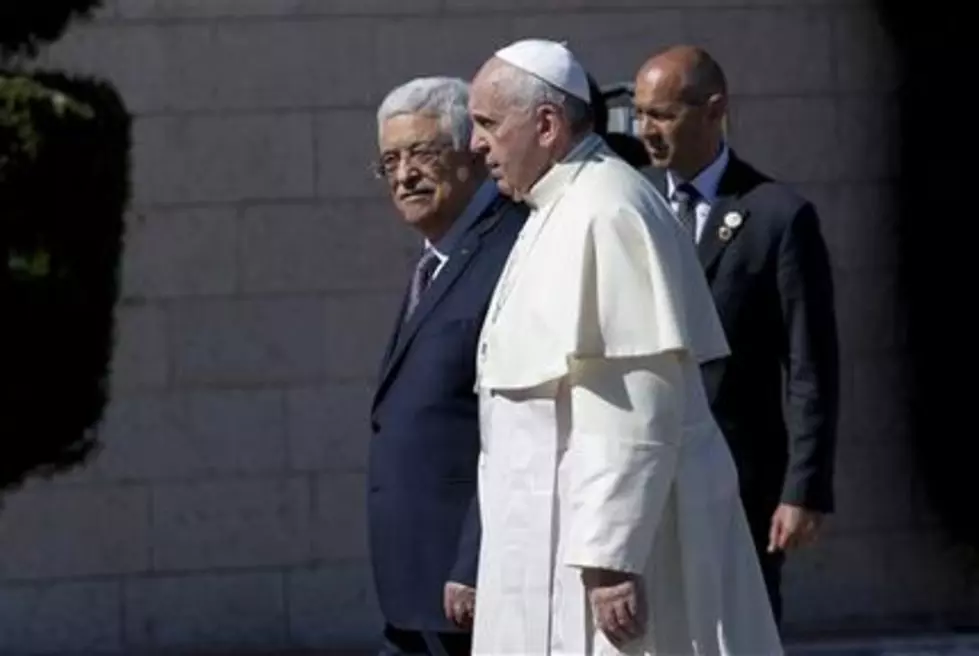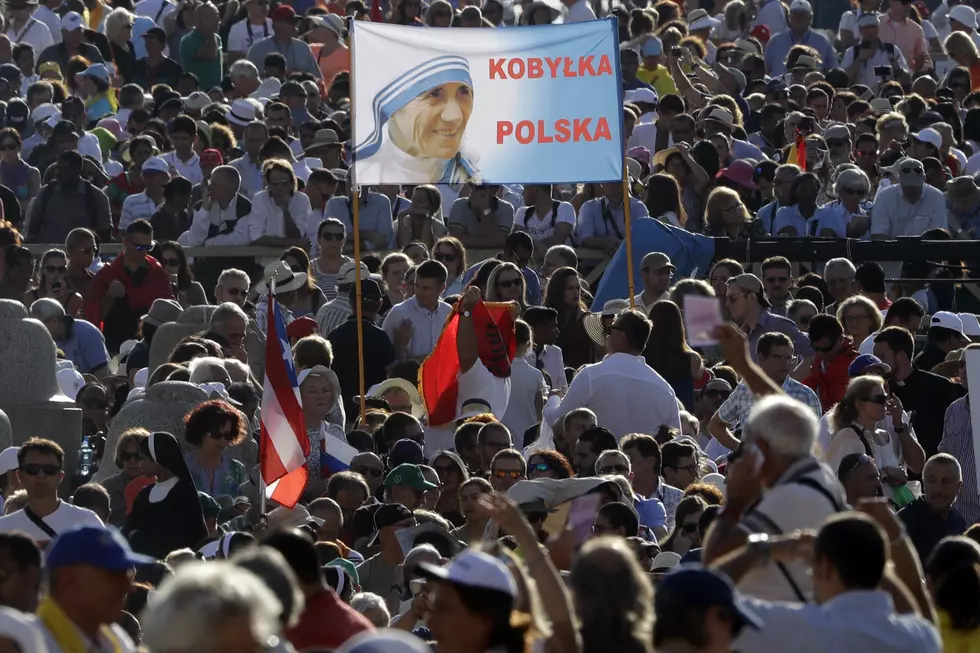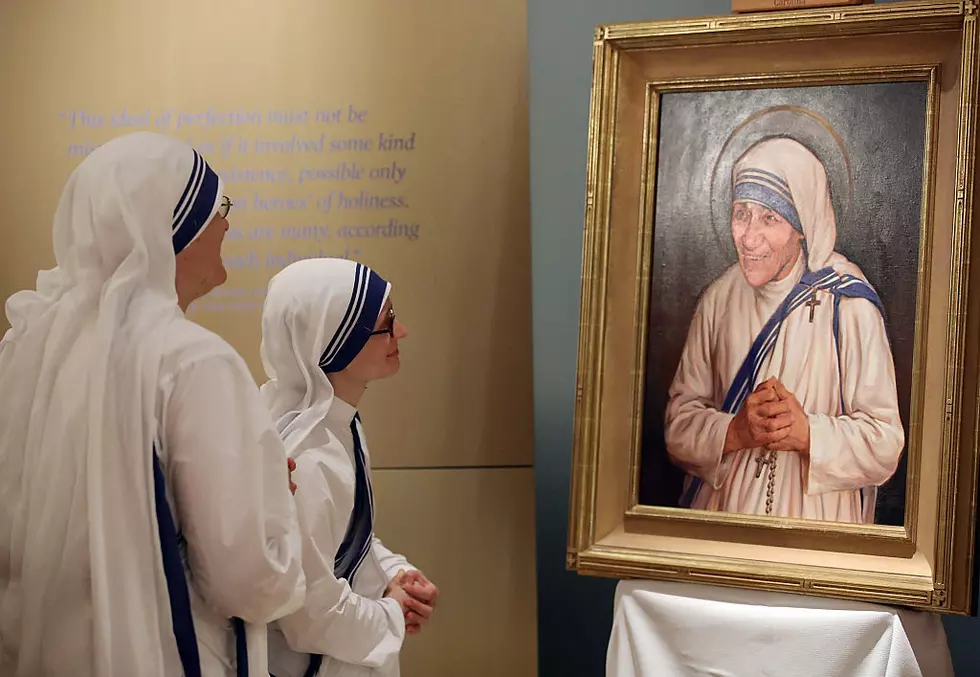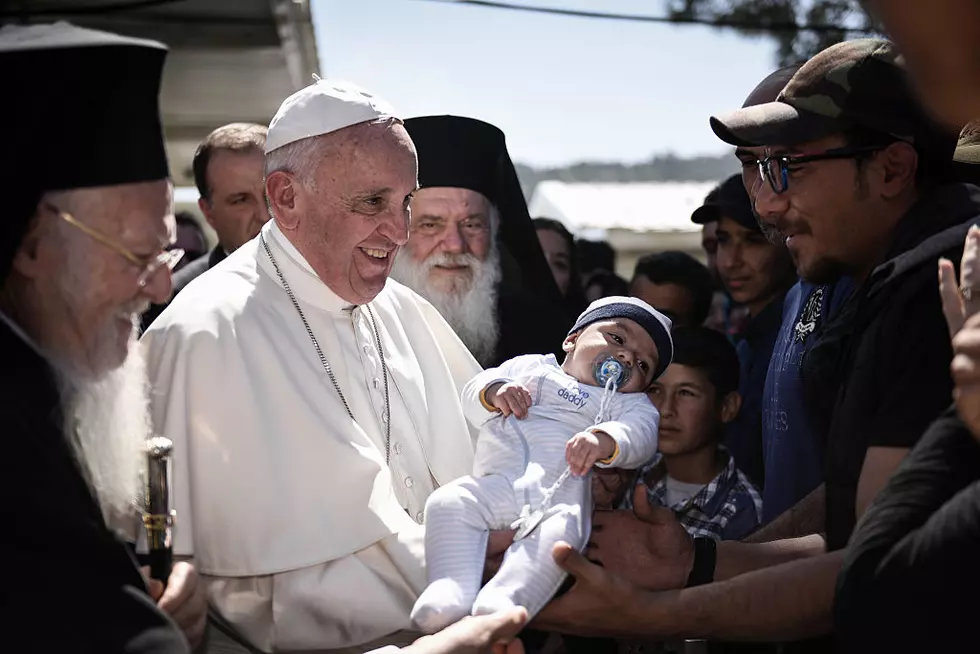
Palestinian Land Owners Appeal to Pope Francis
Juliette Bannoura hopes Pope Francis can save her family's four acres (1.6 hectares) of olive groves and other Palestinian-owned lands in the scenic Cremisan Valley south of Jerusalem from the path of Israel's separation barrier.
Bannoura, 36, was among a select few Palestinian Christians who had lunch with the pontiff Sunday during his pilgrimage to Bethlehem, the cradle of Christianity.
During the hour-long meal, which included stuffed peppers and ice cream for dessert, she and her husband Elias - a Spanish-speaker - outlined the threat to the terraced valley. The area is also home to a monastery and convent sitting on dozens of acres (hectares) of church-owned land.
Many landowners in the valley, including Bannoura, are from Beit Jala, a Christian town of 16,000 next to Bethlehem. "This valley is very, very important to us," she said. "It's our heritage, our culture, it's our tradition."
Bannoura said the pope listened carefully. "He said `I'm very interested in your case,' and he said he will look at it when he goes back," she said.
She said she and her husband presented him with an atlas of historic Palestine that illustrates the political changes over the decades. The pope promised to study it carefully, she said.
In all, five Palestinian families met with the pope after he celebrated Mass on a stage in Manger Square, just outside the Church of the Nativity, built over Jesus' traditional birth grotto.
"The families represent various branches of Palestinian society who faced problems with the Israeli authorities," said Jamal Khader, a senior member of the local Roman Catholic clergy.
One family was from the Gaza Strip, a Palestinian territory on the other side of Israel, which has been isolated by Israeli and Egyptian border blockades since the Islamic militant Hamas seized it in 2007. In another family from the West Bank, a son, freed in a prisoner swap with Israel, was deported to Gaza. A third family lost village land in the Mideast war over Israel's 1948 creation.
Each family had a few minutes to present their case, said Bannoura. Toward the end, Bannoura asked the pope to sign eight photographs of members of her extended family who were unable to attend. She said she also asked for and received a hug from the pontiff.
Francis has said his three-day Middle East visit is largely meant as a spiritual journey. However, both Israelis and Palestinians have been trying to harness the standing as leader of the world's Roman Catholics to bolster their dueling narratives.
The Palestinians want a state in the West Bank, Gaza and east Jerusalem, lands Israel captured in the 1967 Mideast War. The latest round of U.S.-led negotiations on the terms of such a state broke down in April, with each side accusing the other of derailing it.
At issue in the dispute over Cremisan is Israel's West Bank separation barrier, something Pope Francis made an unannounced stop to look at himself Sunday.
Israel portrays it as a defense against Palestinian militants who killed hundreds of Israelis during an armed uprising early in the last decade. During that period, gunmen from Beit Jala routinely fired toward Gilo, an Israeli settlement on the other side of the valley that Israel considers to be a neighborhood of its capital.
Palestinians charge that the barrier is mainly a land grab. Two-thirds complete, it runs mostly in the West Bank, often zig-zagging to include Jewish settlements and additional nearby lands on the "Israeli side."
The Cremisan Valley lies between Jerusalem's southern flank and Beit Jala. Nestled between olive groves are a monastery with a winery and a convent, which also operates a school for children from Beit Jala.
In the valley, the proposed barrier route would place about 750 acres (300 hectares) of Palestinian and church land on the Jerusalem side, said Ghiath Nasser, an attorney for Beit Jala land owners. The monastery would fall on the Jerusalem side and the convent on the West Bank side. Nasser said his clients want the route changed so the barrier would run closer to Jerusalem and keep the valley intact.
Israel's Defense Ministry said that for topographical reasons, the barrier can only be built along the current route. A ministry official, speaking on condition of anonymity in line with briefing regulations, said Israel coordinated closely with the Vatican in planning the route. He said the monks of the monastery initially asked to remain on the Jerusalem side, and that Beit Jala residents would have access to their lands through gates manned by soldiers.
The case is currently before Israel's Supreme Court.
Khader said the Vatican is not directly involved in the court case, but is supporting the Christian families "in order to move the wall further to Jerusalem and save this land."
More From New Jersey 101.5 FM









